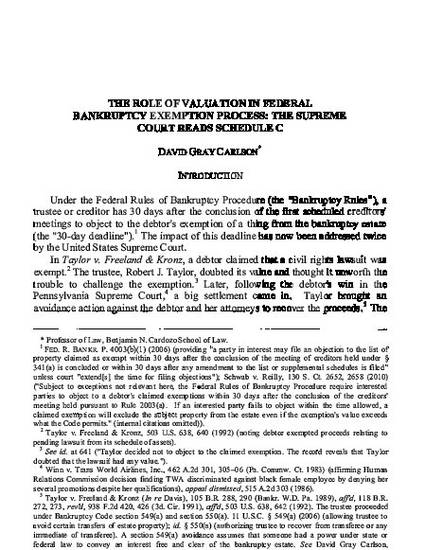
In Taylor v. Freeland & Kronz, a debtor claimed a law suit was exempt. The bankruptcy trustee failed to object within the required period. Later, the law suit realized an amount that far exceeded the monetary limit to which the debtor was entitled. The Supreme Court permitted the debtor to keep all of the proceeds, even beyond the statutory limit, claiming that a deadline was a deadline. Recently, in Schwab v. Reilly, the Supreme Court overruled Taylor, holding that a claim to a monetarily limited item can only exempt the monetary limit. The Court tries and fails to "reconcile" these two holdings. Nevertheless, the rule reached in Schwab is a rational and sensible reading of bankruptcy's exemption process. In the new vision, judicial valuations play no role. An interpretive difficulty arises, however. If judicial valuations play no role in the exemption process, why did Congress bother to craft a careful definition of valuation in Bankruptcy Code section 522(a)(2)? In spite of this embarrassment, a humble role can be found for section 522(a)(2), and the Supreme Court's interpretation of the exemption process can be defended.
- Bankruptcy,
- Exemption,
- Bankruptcy Estate,
- Debtor,
- Creditor,
- Judicial Lien
Available at: http://works.bepress.com/david_carlson/30/
